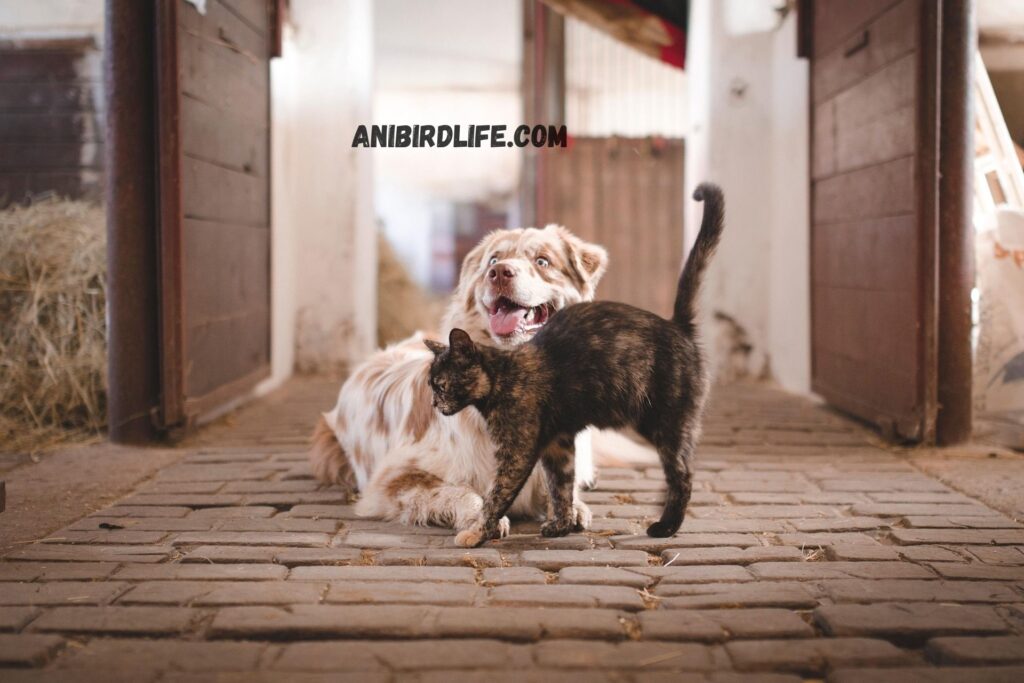As pet owners, our dogs and cats are more than just animals they’re beloved members of the family. Keeping them healthy and happy is a top priority, but understanding the common diseases in dogs and cats that can affect them is key to ensuring their well-being. From parvovirus in dogs to feline leukemia in cats, this guide covers the most common illnesses, their symptoms, prevention tips, and treatment options.
Common Diseases in Dogs
1. Parvovirus
Parvovirus is a highly contagious viral disease that mainly targets puppies and dogs that have not been vaccinated.
It attacks the gastrointestinal system, causing severe vomiting, diarrhea (often bloody), and dehydration. If left untreated, it can lead to fatal consequences.
Prevention: The most reliable method to protect against parvovirus is vaccination.
Puppies should receive their first vaccine at 6-8 weeks of age, followed by booster shots.
Treatment: Immediate veterinary care is crucial. Treatment often includes IV fluids, anti-nausea medications, and antibiotics to prevent secondary infections.
2. Distemper
Canine distemper is a serious viral disease that affects the respiratory, gastrointestinal, and nervous systems. Symptoms include fever, coughing, nasal discharge, and seizures.
Prevention: Vaccination is essential. The distemper vaccine is typically part of a puppy’s core vaccination schedule.
Treatment: There is no cure for distemper, but supportive care can help manage symptoms and improve the dog’s quality of life.
3. Heartworm Disease
Heartworms are parasitic worms transmitted by mosquitoes. They live in the heart and lungs, causing coughing, fatigue, and, in severe cases, heart failure.
Prevention: Monthly heartworm preventatives are highly effective. Regular testing is also recommended.
Treatment: Treatment involves medications to kill the worms, but it can be risky and expensive. Prevention is always better than cure.
4. Lyme Disease
Lyme disease is an infection transmitted through tick bites, caused by the bacterium Borrelia burgdorferi. Symptoms include fever, joint swelling, and lethargy.
Prevention: Apply tick repellents and thoroughly inspect your dog for ticks after spending time outdoors. Vaccination is also available in some areas.
Treatment: Antibiotics are typically prescribed to treat Lyme disease.

Common Diseases in Cats
1. Feline Leukemia Virus (FeLV)
FeLV is a retrovirus that weakens a cat’s immune system, making them susceptible to other infections and diseases. Symptoms include weight loss, lethargy, and recurrent infections.
Prevention: Vaccination is available, but it’s not always recommended for indoor cats. Testing and keeping FeLV-positive cats separate from healthy ones is crucial.
Treatment: There is no cure, but supportive care can help manage symptoms and improve quality of life.
2. Feline Immunodeficiency Virus (FIV)
FIV is similar to HIV in humans and weakens a cat’s immune system over time. Symptoms include weight loss, recurrent infections, and dental issues.
Prevention: Keep cats indoors to reduce exposure to infected cats. Currently, there is no proven vaccine available for FIV.
Treatment: While there is no cure, antiviral medications and supportive care can help manage the disease.
3. Feline Upper Respiratory Infection
This common condition is caused by viruses or bacteria and leads to symptoms like sneezing, nasal discharge, and conjunctivitis.
Prevention: Vaccination can help reduce the risk. Keeping your cat’s environment clean and stress-free also helps.
Treatment: Depending on the underlying cause, antibiotics or antiviral medications might be recommended.
4. Chronic Kidney Disease (CKD)
Rabies is a deadly viral infection that impacts the nervous system.
It is transmitted through the bite of an infected animal. Chronic Kidney Disease (CKD) is a prevalent issue in senior cats, where kidney function declines over time. Common signs include excessive thirst, weight loss, and fatigue.
Prevention: Routine vet visits can help catch early signs of kidney problems before they progress.
Prevention: Routine veterinary exams can help identify the early symptoms of kidney disease.
Treatment: While CKD cannot be cured, dietary changes, medications, and fluid therapy can help manage the condition.
Common Diseases in Dogs and Cats
1. Rabies
Rabies is a deadly viral infection that targets the nervous system, spread through the bite of an infected animal.
Prevention: Vaccination is mandatory in most areas and is highly effective.
Treatment: There is no cure for rabies once symptoms appear, making prevention critical.
2. Ringworm
Ringworm is a fungal infection that causes circular, itchy skin lesions. It spreads easily and is highly contagious to both animals and humans.
Prevention: Keep your pet’s environment clean and avoid contact with infected animals.
Treatment: Antifungal medications and topical treatments are typically used.
3. Fleas and Ticks
These parasites can cause skin irritation, anemia, and transmit diseases like Lyme disease and tapeworms.
Prevention: Use monthly flea and tick preventatives and regularly check your pet’s coat.
Treatment: Medications and topical treatments can eliminate fleas and ticks.

How to Keep Your Pets Healthy from Common Diseases in Dogs and Cats
- Regular Veterinary Check-ups: Annual or biannual visits can help detect diseases early.
- Vaccinations: Stay up-to-date on core and non-core vaccines.
- Parasite Prevention: Use preventatives for fleas, ticks, and heartworms.
- Balanced Diet: Feed your pet high-quality food to support their immune system.
- Exercise and Mental Stimulation: Keep your pet, dog & cat active and engaged to maintain overall health.
Conclusion
From parvovirus in dogs to feline leukemia in cats, understanding common diseases in Dogs and Cats is the first step in protecting your furry friends. By staying informed, prioritizing preventive care, and seeking prompt veterinary attention when needed, you can help ensure your pets live long, healthy, and happy lives.
If you found this guide helpful, share it with other pet owners to spread awareness about common diseases in dogs and cats. By working together, we can ensure our pets stay safe and healthy!
FAQs About Common Diseases in Dogs and Cats
1. What are the most common diseases in dogs?
The most common diseases in dogs include parvovirus, distemper, heartworm disease, Lyme disease, and kennel cough.
2. What are the most common diseases in cats?
Common feline diseases include feline leukemia virus (FeLV), feline immunodeficiency virus (FIV), upper respiratory infections, and chronic kidney disease (CKD).
3. How can I prevent my pet from getting sick?
Preventive measures include regular vaccinations, parasite control, a balanced diet, and routine veterinary check-ups.
4. Are any of these diseases contagious to humans?
Some diseases, like ringworm and rabies, can be transmitted from pets to humans. Proper hygiene and preventive care can reduce the risk.
5. What should I do if I suspect my pet is sick?
Contact your veterinarian immediately. Identifying and treating the condition early can greatly enhance the chances of a positive outcome.
6. Can indoor cats get diseases like FeLV or FIV?
While indoor cats are at lower risk, they can still contract diseases if exposed to infected animals or through contaminated objects.
7. How often should I vaccinate my pet?
Vaccination schedules vary depending on the disease and your pet’s age. Reach out to your veterinarian for a personalized care plan.
8. What are the symptoms of heartworm disease in dogs?
Signs of heartworm disease include persistent coughing, tiredness, weight loss, and trouble breathing. In advanced stages, it can result in heart failure.
9. Is there a cure for feline leukemia?
While there is no cure for FeLV, supportive treatment can alleviate symptoms and enhance the cat’s quality of life.
10. How can I protect my pet from ticks and fleas?
Use monthly preventatives, check your pet’s coat regularly, and keep their environment clean.
